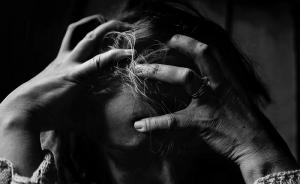Phobophobia: symptoms, causes and treatment
Phobias are characterized by the great variety of forms they take. If there is an element of reality or even a phenomenon imaginable by the human being, probably at some point someone will have developed a phobia of that.
For example, there is the phobia of cats and spiders, forms of fear that, although irrational in the vast majority of cases, make a certain sense; But there are also the phobia of clowns, the phobia of holes, or the phobia of birds, which is more difficult to understand without feeling them in the flesh themselves.
However, beyond all this variety of forms, there is a type of phobia that seems the purest of all, the most basic. It is about phobophobia, or the phobia of fear itself. In this article we will see what it is like, what symptoms characterize this psychological disorder, and how it is treated in psychotherapy.
- Related article: "Types of Phobias: Exploring Fear Disorders"
What is phobophobia?
As we have advanced in the previous paragraphs, the simplest way to understand what phobophobia is is to consider it the fear phobia, or the phobia of phobic crises. In other words, it is a whiting that bites its tail,
a vicious cycle that feeds itself at the cost of the anxiety that the person who suffers keeps latent due to various circumstances (we will see the latter later).Those who suffer from phobophobia can live normally for most of the time, but occasionally they will notice that several things: he will avoid places and contexts in which he believes that they can give him attacks of fear, and on the other hand he will suffer such attacks of fear extreme... or rather, anxiety.
What kinds of situations will trigger phobic crises? Potentially anyone. This is so because in this case the root of fear is fear itself, a phenomenon that does not emanate from the environment: fear does not "spring" from a dog that barks in a threatening way, nor on the top of a sloping mountain pronounced.
In any case, fear, which triggers anxiety peaks, is something contextual, a process that occurs in the interaction between the individual and a situation that will be subjectively interpreted and valued by the First. Because of this, what can be scary is both everything and nothing.
Because of this, phobophobia is one of the most unpredictable types of phobia, given that it is not tied to any type of concrete stimulus and easy to objectify, but arises from something as subjective as the idea that each one has about what is scary depending on the occasion.
Symptoms
What are the symptoms of phobophobia? Quickly stated, they are typical of practically any phobia since the main differences between them are the type of situations or stimuli that trigger them. For example, mouse phobia and driving phobia generally manifest themselves in very similar ways.
Among the characteristic symptoms of phobias we find dizziness, nausea, tremors, cold sweat, increased heart rate, the catastrophic thoughts about what will happen in the next few seconds or minutes, and the intense desire to flee from the place where you are, or to hide.
Causes
As for the causes of phobophobia, these are partly unknown, although it is known that there are many and each probably contributes little to the development of this type of anxiety.
Genetic predispositions are assumed to explain part of why some people end up developing phobophobia, and also that certain unpleasant experiences are capable of leaving a kind of imprint on our emotional memory, progressively causing the fear of fear to generate a ball of snow down the hill, getting bigger as new unpleasant experiences add to this set of memories crave us.
- You may be interested: "Types of Anxiety Disorders and their characteristics"
Treatment
How is phobophobia treated in mental health facilities? Psychotherapy has proven to be very effective in dealing with these kinds of anxiety disorders. What we psychotherapists do is to create situations in which the patient learns to weaken the bond that keeps two memories linked together in the emotional memory: the memory of how one reacts to the possibility of being afraid, and the memory of how bad it is when having great crisis of fear or anxiety.
In this way, the unconscious part of the mind of patients with phobophobia stops establishing a equivalence relation between "having the expectation of being afraid" and "suffering an intense crisis of anxiety".

In the Psychomaster psychology center, located in Madrid, we have a team of psychologists with extensive experience in the treatment of anxiety disorders such as phobias, and the principles to apply are always enhance the autonomy of patients making them, little by little, be able to see for themselves that when exposed to what they are so afraid of, it does not happen nothing.
A) Yes through experience in therapy, changes are achieved for the better both in their way of behaving (not avoiding objectively harmless situations) and in their way of interpreting reality.
Bibliographic references:
- American Psychiatric Association (2013). Diagnostic and Statistical Manual of Mental Disorders (5th ed.). Washington, DC: Author.
- Griez, E.J. & Van den Hout, M.A. (1983). Treatment of Phobophobia by Exposure to CO2-Induced Anxiety Symptoms. The Journal of Nervous and Mental Disease 171: 506-508.
- Mark, I.M. (1978). Living with fear: understanding and coping with anxiety. USA: McGraw Hill.


